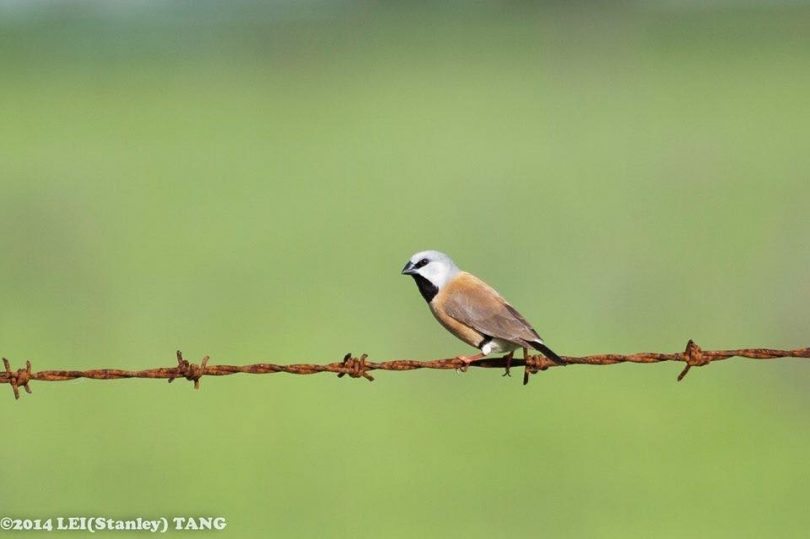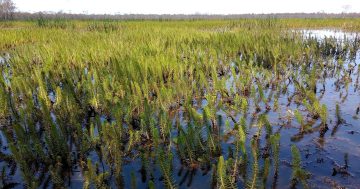
Critics of Adani’s coal mine plan say that the plan to limit the impact on the black-throated finch will not save the endangered bird. Photo: Facebook.
A small, rust-coloured bird with a distinctive black throat has come to represent the battle between environmental groups, the concerned public, and a coal mine, proposed by the Indian owned Adani Group, in the Galilee Basin in Central Queensland.
“The Black-Throated Finch is famous for all the wrong reasons,” says Steve Sass, who runs On The Perch Bird Park in Tathra, where he has two breeding colonies of the endangered finch.
Adani’s groundwater treatment plan was approved this week by the Queensland Government – the last key hurdle before preliminary work can begin. This latest step follows the controversial approval of a management plan for the finch in late May.
Adani says, “following recent scientific advice from the Queensland Department of Environment and Science, we have added more detail to the Black-Throated Finch Management Plan on items such as cattle grazing intensity, habitat and population management and also delivered updates to our ongoing research plan.”
The mine will be the largest in Australia and one of the largest in the world, with six open-cut pits and five underground mines covering a total of 68,923 acres of finch habitat.
Because of public outrage over proposed large-scale mining activity in the last known habitat of a critically endangered species, the finch is now well-known. Steve says he often has people coming in to ask: “do you have the ‘Adani finch’?”
“We have a total of 20 black-throated finches at the park,” he says “and they are fantastic birds to watch, always on the go and there’s lots of social interaction, lots of head bobbing. They’re real characters.”
The finch, once common across South-Eastern Australia, was declared extinct in NSW in 2016 and is considered to be on the verge of extinction. Its biggest threat is habitat loss, including the increase in grazing land, as the finch relies on the seed heads of native grasses for food.

One of On The Perch Bird Park’s resident Black-Throated Finches. Photo: Debbie Osiecki, On the Perch Facebook.
“We think of extinctions as something that happened early, right around colonization but the reality is that extinction is ongoing,” Steve says, “probably the main reason the birds are extinct in NSW is because of agriculture.”
Part of the newly approved Adini finch management plan requires that 33,000 hectares of dedicated conservation land surrounding the mine site will be managed by mining giant as habitat for the finch and other local native species.
Critics of the plan say that expecting that finches will move off the mine site and onto the conservation land is madness, especially when very little is known about how similar the environments are and without accurate estimates of finch populations in either location.
“From an ecological perspective, when a species is living in the wild, it’s because everything they need is there,” Steve says “and if they are not living somewhere, there’s a reason.’
Steve, working with the Finch Society of Australia, is one of many aviculturists ensuring that there is an insurance policy in place should the effects of human activities mean that the Black-Throated Finch disappears forever in the wild.
“This finch is reasonably secure in captivity,” Steve explains, adding that the birds do require some special treatment in order to breed successfully in captivity, including being fed live insects that Steve breeds onsite and a made-to-order seed mixture.
“It’s not just food – a lot of thought goes into planning the enclosure so that they feel comfortable enough to breed.”
Steve’s plan seems to be working – although it’s a little early in the season, he has already noticed some distinctive nesting activity from his finches.
At 1 pm this Saturday (June 15) and Sunday (June 16) the ‘Meet the Keeper Talk’ at On The Perch will be your chance to see this special finch first hand! Head along and support Steve’s efforts to preserve the Black-Throated Finch and other threatened Australian birds.








